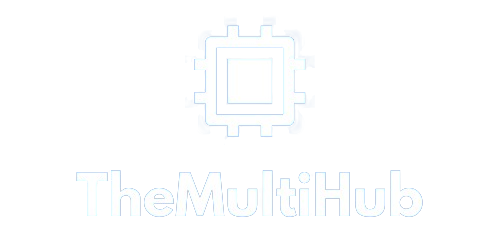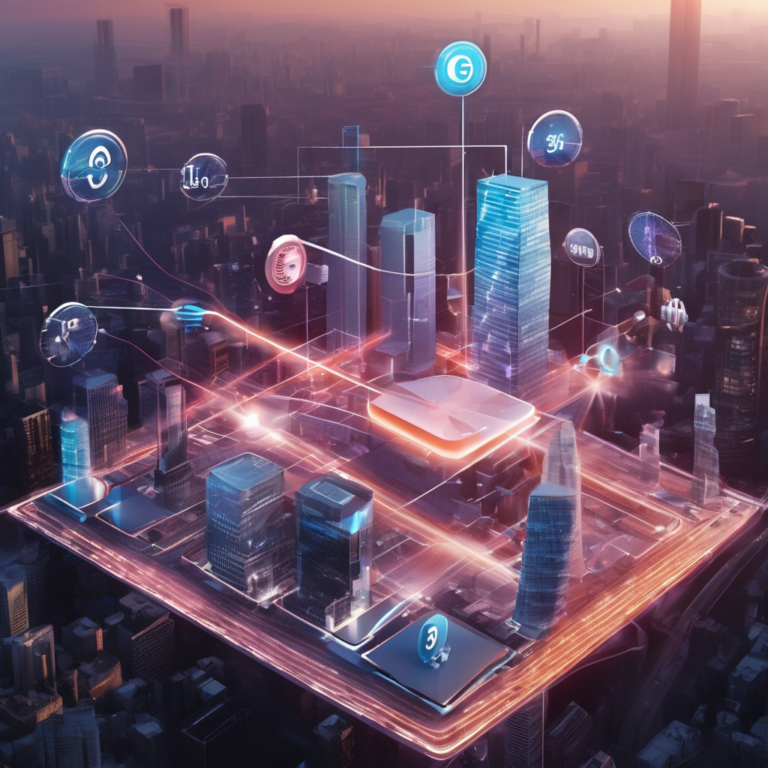Introduction to 5G Technology
The advent of 5G technology marks a pivotal shift in how we connect and communicate. As the fifth generation of wireless technology, 5G is set to transform our digital landscape with unprecedented speed and reliability. Unlike its predecessors, 5G promises to deliver higher bandwidth, lower latency, and the ability to connect a vast number of devices simultaneously. This revolutionary technology is not just about faster internet; it’s about creating a more connected and intelligent world.
Enhanced Connectivity: Speed and Efficiency
One of the most remarkable features of 5G is its enhanced connectivity. With speeds up to 100 times faster than 4G, 5G can download a full HD movie in mere seconds. But speed is only part of the story. The efficiency of 5G also means lower energy consumption for devices and networks, which is crucial for the sustainability of the ever-growing number of connected devices.
Bandwidth and Latency Improvements
5G’s increased bandwidth allows for more data to be transmitted at once, which is essential for high-demand applications such as streaming, gaming, and virtual reality. Furthermore, the ultra-low latency—the time it takes for data to travel from one point to another—ensures real-time responsiveness. This is particularly important for applications like autonomous driving and remote surgery, where even a slight delay could have severe consequences.
Impact on Business and Industry
The introduction of 5G is poised to revolutionise various industries by enabling new business models and improving existing services. From manufacturing to healthcare, the possibilities are endless.
Manufacturing and Industry 4.0
In the realm of manufacturing, 5G facilitates the Industrial Internet of Things (IIoT), where equipment and sensors are interconnected to optimise production processes. This leads to predictive maintenance, where machines can self-diagnose and predict failures before they happen, thus reducing downtime and saving costs. Smart factories equipped with 5G can adjust processes in real-time, increasing efficiency and productivity.
Healthcare and Telemedicine
In healthcare, 5G enables telemedicine and remote monitoring. Doctors can perform remote diagnostics and even surgery with the help of robotic tools controlled over a 5G network. This is particularly beneficial in rural or underserved areas where access to specialist care is limited. Moreover, wearable devices can continuously monitor patients’ health, providing real-time data to healthcare providers and allowing for proactive rather than reactive care.
Retail and Customer Experience
The retail industry is also set to benefit immensely from 5G. With enhanced mobile broadband, retailers can offer immersive shopping experiences through augmented reality (AR) and virtual reality (VR). Imagine trying on clothes virtually or visualising how furniture would look in your home before making a purchase. Additionally, the improved connectivity enables better inventory management and supply chain transparency, ensuring that products are available when and where customers want them.
Smart Cities and IoT
5G is the backbone of smart cities and the Internet of Things (IoT). By connecting millions of devices, from traffic lights to home appliances, 5G creates a more efficient and liveable urban environment.
Transportation and Autonomous Vehicles
In transportation, 5G enables autonomous vehicles to communicate with each other and with infrastructure in real-time. This leads to safer roads, reduced traffic congestion, and lower emissions. Smart traffic management systems can adapt to real-time conditions, improving traffic flow and reducing wait times at intersections.
Energy and Utilities
For energy and utilities, 5G supports smart grids that can balance electricity supply and demand more effectively. This leads to reduced energy waste and lower costs for consumers. Smart meters provide real-time data on energy usage, helping consumers to make more informed decisions about their consumption.
The Future of Work
The rise of 5G is also set to transform the workplace. With faster and more reliable connectivity, remote work becomes more feasible and productive. Virtual meetings can be conducted with high-definition video and minimal lag, while cloud computing and collaborative tools become more powerful and efficient.
Remote Collaboration Continued
5G enables seamless remote collaboration, allowing teams to work together from different parts of the world as if they were in the same room. With the aid of advanced video conferencing tools, virtual whiteboards, and real-time document editing, businesses can maintain productivity and innovation regardless of geographical barriers. This is particularly beneficial in the current global landscape, where remote work has become more prevalent.
Enhanced Virtual Reality (VR) and Augmented Reality (AR) for Training
Training and development programmes are being transformed by 5G-powered VR and AR. Employees can undergo immersive training sessions that simulate real-world scenarios without the associated risks or costs. For example, medical professionals can practice complex procedures in a simulated environment, while engineers can receive hands-on training on machinery without leaving their desks. This not only enhances skill acquisition but also ensures that employees are better prepared for real-life challenges.
Entertainment and Media
The entertainment industry is set to undergo a significant transformation with the introduction of 5G. The combination of high-speed data transfer and low latency opens up new possibilities for content creation and consumption.
Streaming and Gaming
5G allows for buffer-free streaming of high-definition and 4K content. Consumers can enjoy their favourite shows and movies with crystal clear resolution and without interruptions. Additionally, cloud gaming services are set to thrive, offering gamers the ability to play graphically intensive games directly from the cloud, without the need for expensive hardware. This democratizes access to high-quality gaming experiences, making them available to a broader audience.
Live Events and Broadcasting
For live events and broadcasting, 5G enables ultra-high-definition live streams with minimal delay. This is particularly valuable for sports events, concerts, and other live performances, where fans can experience the action as it happens, regardless of their location. Broadcasters can also utilise 5G to deploy remote production setups, reducing the need for extensive on-site equipment and personnel.
Security and Privacy Considerations
As with any technological advancement, the rise of 5G brings about concerns regarding security and privacy. The increased connectivity and the vast amount of data being transmitted necessitate robust security measures to protect against cyber threats.
Network Security
5G networks are inherently more complex than their predecessors, incorporating a variety of technologies such as network slicing and edge computing. Each of these components presents potential vulnerabilities that must be safeguarded. Network operators are employing advanced encryption techniques and multi-factor authentication to ensure that data remains secure.
Data Privacy
With more devices connected to the internet, the amount of personal data being collected and shared increases exponentially. It is crucial for businesses and service providers to adhere to strict data privacy regulations and implement practices that protect user information. Users should also be educated on best practices for maintaining their privacy in an increasingly connected world.
Challenges and Opportunities
While the potential of 5G is immense, its deployment is not without challenges. Infrastructure development, regulatory hurdles, and high deployment costs are some of the barriers that need to be addressed.
Infrastructure and Deployment
The rollout of 5G requires significant investment in new infrastructure, including the installation of small cell antennas and the upgrade of existing networks. This can be a costly and time-consuming process, particularly in rural or remote areas. However, partnerships between governments, network providers, and private enterprises can help to expedite this process and ensure wider coverage.
Regulatory Environment
Regulatory frameworks need to evolve to keep pace with the rapid advancements in 5G technology. This includes ensuring that spectrum allocation is managed efficiently and that there are clear guidelines for the deployment and operation of 5G networks. Policymakers must strike a balance between encouraging innovation and protecting public interests.
Business Opportunities
Despite these challenges, the opportunities presented by 5G are vast. Businesses that leverage 5G technology can gain a competitive edge by offering innovative services and enhanced customer experiences. Industries ranging from automotive to agriculture stand to benefit from the efficiencies and capabilities that 5G provides. Entrepreneurs and startups, in particular, have the chance to develop new applications and solutions that were previously not possible.
Conclusion
The rise of 5G represents a paradigm shift in connectivity and business. Its impact will be felt across various sectors, driving innovation and creating new opportunities for growth. As we navigate the challenges of deploying this revolutionary technology, it is clear that the benefits will far outweigh the obstacles. The future of 5G is bright, and its potential to transform our world is immense.


